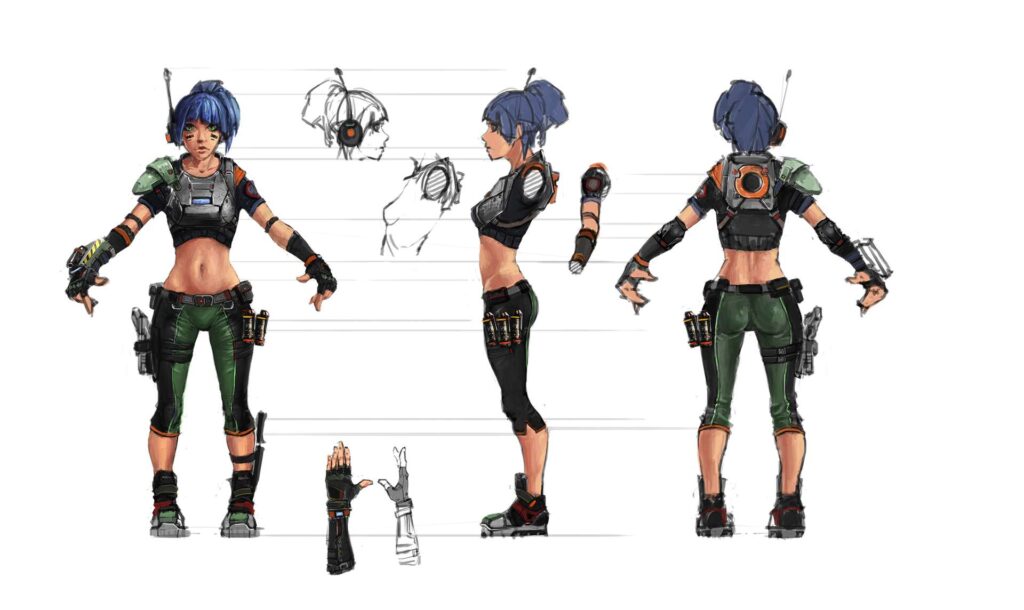Designing characters for video games is a complex process that requires creativity, technical skill, and attention to detail. Game designers and artists must consider a range of factors such as the game’s genre and story, target audience, and platform. The process of designing characters for 2D and 3D games involves creating initial concept art, developing the character design and modeling, applying textures and shading, and animation. Each stage of the process is critical to bringing the character to life. By understanding the key considerations, techniques, and tools used by game developers, aspiring game artists and designers can gain a deeper appreciation of character design.
From Concept to Creation: Designing Characters in 2D and 3D Games
Introduction
Designing characters in video games is a complex process that requires considerable creativity, technical skill, and attention to detail. Whether working in 2D or 3D, game designers and artists must consider a range of factors, from the game’s genre and story to its target audience and platform.
In this article, we will explore the process of designing characters for 2D and 3D games, from initial concept art to final modelling and animation. We will discuss the key considerations, techniques, and tools used by game developers to bring their characters to life.
Concept Art
The first step in creating a character for a video game is to develop a concept. This involves brainstorming ideas, sketching initial designs, and creating detailed concept art. Concept art is a critical part of the design process, as it allows the development team to visualize the character and refine its appearance before moving on to the modelling stage.
In 2D games, concept art may be created using traditional drawing and painting techniques or digital software, such as Photoshop or Illustrator. Artists typically create sketches, rough drafts, and final versions of the character, experimenting with various styles, colors, and details. The concept art may also include sketches of the character in different poses, expressions, or environments, showing how it will interact with the game world and other characters.
In 3D games, concept art often takes the form of 3D models or sculptures. 3D artists may use software such as ZBrush or Blender to sculpt a detailed model of the character, which can be rotated and viewed from different angles. The 3D model can also be used to create a range of concept art, including detailed textures, lighting, and shading.
Character Design and Modeling
Once the concept art has been approved, the character design and modelling stage begins. In 2D games, this typically involves creating the character sprite, or the two-dimensional graphic that will represent the character in the game. The sprite may be created by hand or using digital software, with each frame of animation carefully crafted to depict the character’s movements and actions.
In 3D games, character modelling is a more involved process that requires a range of skills, including sculpting, texturing, rigging, and animation. The 3D model is created from scratch, often using reference images or concept art as a guide. The model is built using polygons, and sculpted to create the character’s unique features and details.
Texturing and Shading
Once the character model is complete, the next step is to apply textures and shading. Texturing involves applying a two-dimensional image, or texture, to the surface of the 3D model. This texture can be a photograph or a hand-drawn image, and is used to give the model a realistic appearance by mimicking the look and feel of various materials, such as skin, fur, or metal.
Shading is the process of creating a range of highlights and shadows on the model, to give it depth and dimensionality. Shading is typically achieved using software such as Maya, 3D Studio Max, or Blender, which allow artists to create complex lighting and shadow effects.
Animation
The final stage in creating a character for a video game is animation. Animation involves creating a series of movements and actions that the character can perform in the game, such as walking, running, jumping, and attacking. In 2D games, animation is typically created by hand, with each frame of animation carefully crafted to show the character’s movements and actions.
In 3D games, animation is created using rigging, a process that involves creating a system of joints and bones within the character model. The rig allows the character to move and pose realistically, with each movement and action controlled by an animator using software such as Maya, 3D Studio Max, or Blender.
Conclusion
Designing characters for 2D and 3D games is a complex process that requires considerable creativity, technical skill, and attention to detail. From developing initial concept art to creating detailed character models and animations, every stage of the process is critical to bringing the character to life. By understanding the key considerations, techniques, and tools used by game developers, aspiring game artists and designers can gain a deeper appreciation of the art and science of character design, and be inspired to create their own unique characters.
